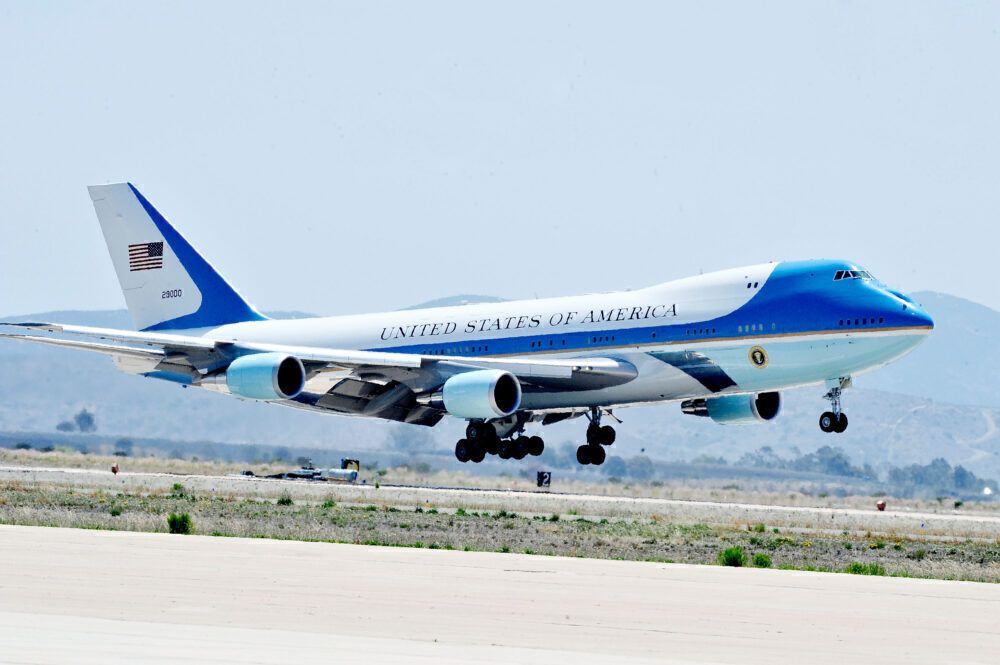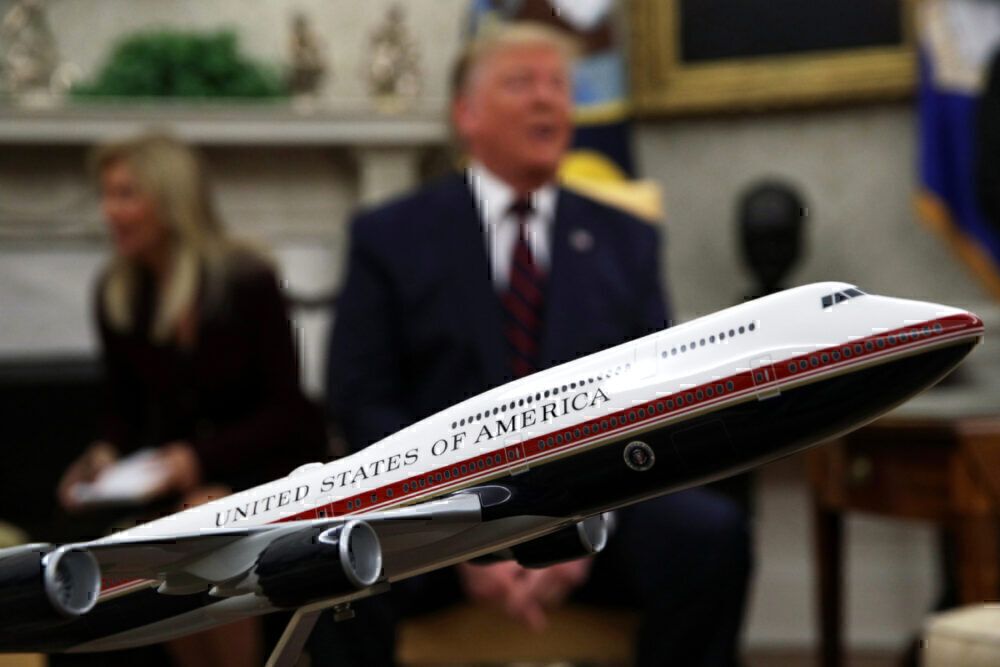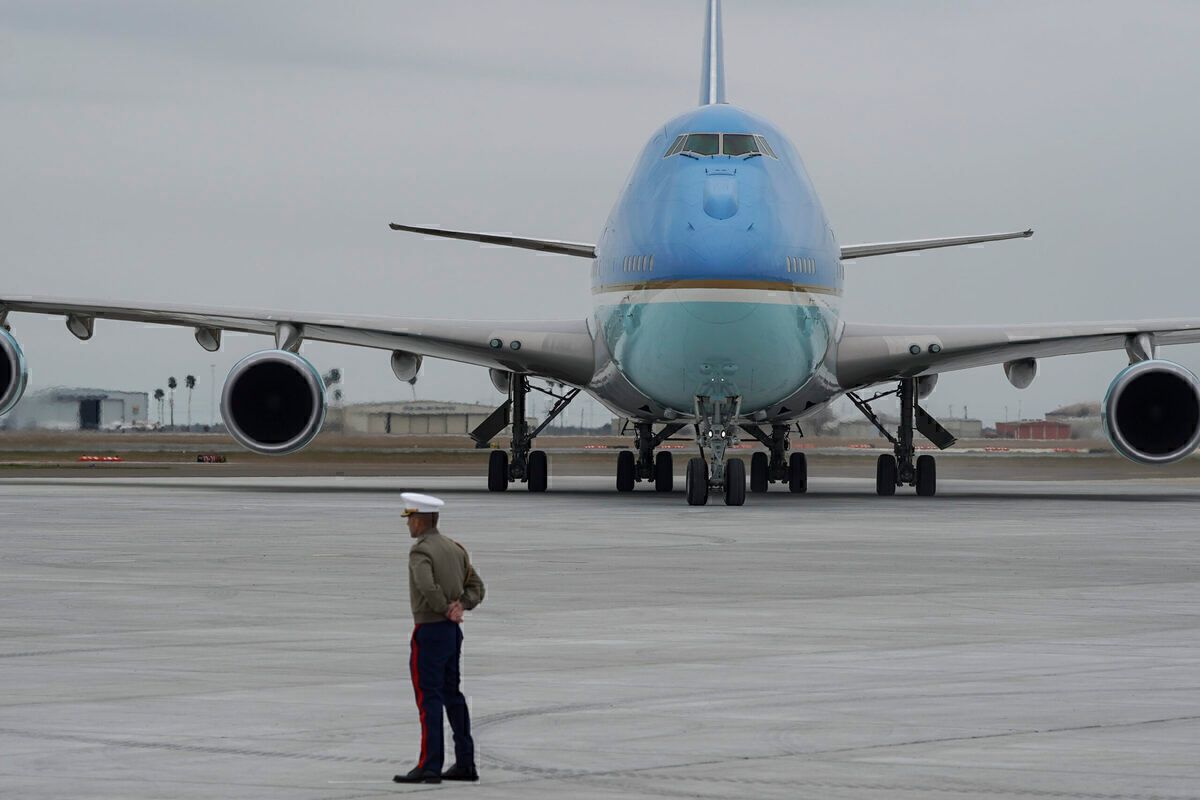Read update
- Adding comment from Boeing
UPDATE: 2022/06/15 05:56 EST BY MICHAEL DORAN
Adding comment from Boeing
"We continue to make steady progress on the VC-25B program, while navigating through some challenges. It's an honor to be entrusted with this responsibility and we take particular pride in this work. Our focus is on delivering two exceptional Air Force One airplanes for the country."
As if Boeing didn't already have enough controversy on its plate at the moment, the handshake deal it did with former President Donald Trump for two new presidential aircraft is costing the planemaker a fortune. As a result, it is straining relationships with the US Air Force and causing potential further damage to its reputation.
In 2018, Trump and Boeing's then-CEO Dennis Muilenburg agreed on a deal to modify two Boeing B747-8s to VC-25Bs, the plane used as Air Force One. While it was described as an 'informal deal,' it capped the price at $3.9 billion with expected delivery in 2024. Somewhat ironically, given current world events, the new aircraft are a pair of Boeing 747-8s initially built for a bankrupt Russian airline, Transaero. In April, Boeing disclosed it had already lost $1.1 billion in costs related to the program and warned that more losses could be coming in future quarters.
The Trump colors are not going on Air Force One
When the aircraft were ordered, Trump said they would have a new red, white and blue color scheme, departing from the baby blue livery on the current presidential plane. It seems the Biden administration has rejected the change in the color scheme, and the new aircraft will maintain the Kennedy-era colors.
The issue for Boeing is that cost overruns are its responsibility under the fixed-price contract. In the April filing, Boeing said that higher supplier costs, higher costs to finalize certain technical requirements and schedule delays on the new presidential planes as reasons for the overruns. Current CEO David Calhoun said:
"Air Force One, I'm just going to call a very unique moment, a very unique negotiation, a very unique set of risks that Boeing probably should not have taken. But we are where we are, and we're going to deliver great airplanes."
On June 11, Bloomberg reported that US Air Force chief weapons buyer Andrew Hunter said the fixed price agreement creates an inherent conflict between the two sides. He told Bloomberg that a company's incentive is to finish and minimize costs, while the Pentagon wants "to get every single thing that we said in the contact you have to do and get it done, and we are not going to pay you more for it. I don't think the structure of the contract drove the issues that we have seen with the program but having a fixed price contract like this, it does raise challenges with how we manage those issues when they arise."
Boeing is committed to delivering a great aircraft
In the report, Boeing said that the company "made the decision it did in 2018 and agreed to the terms of the fixed price contract. Events have since added to the development risks and challenges, which could not have [been] anticipated at that time. That said, we are moving forward and are fully committed to delivering this aircraft to meet our nation's call."
Current forecasts suggest Boeing will deliver the first VC-25B two years after its original December 2023 due date and the second one three years after the April 2024 date. This will potentially expose Boeing to added compensation for the substantial delivery delays.
Some of the problems affecting the program include replacing the aircraft's interior supplier because of underperformance and financial issues, and challenges from installing more than 200 miles (322 kilometers) of wiring, which is almost double that in a commercial version of the 747-8.
For his part, Hunter believes the program will right itself and doesn't see a risk to the aircraft being delivered. "We're going to get the aircraft. We will work out the issues that have arisen with wiring and other things, and we're going to be able to support the president while that is happening," he told Bloomberg.
Discover more aviation news here.
Source: Bloomberg




